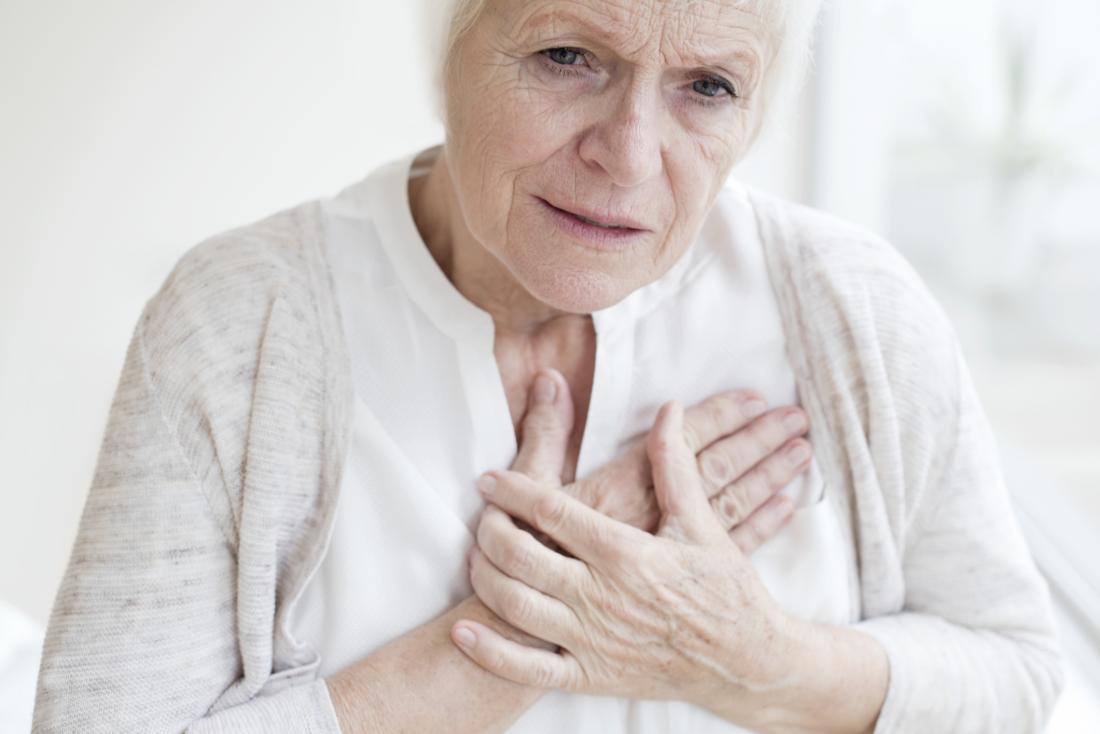
Why do women still have to fight to receive the correct diagnosis?
Women have played a vital role in the improvement of medical care across clinical fields.
Figures such as Dorothea Dix, who helped change the face of mental health care, Rosalind Franklin, who contributed to the discovery of human DNA structure, and Dr. Virginia Apgar, who put together the evaluation criteria assessing the health status of newborn infants, have revolutionized medicine.
Despite this, women and girls across the world still face challenges and discrimination in medical settings.
Only last year, for instance, senior staff from the Tokyo Medical School, as well as from Juntendo and Kitasato Universities in Japan, admitted to manipulating entrance exam scores so that fewer women candidates would qualify for their courses.
These admissions spurred endless debates about the degree to which women who choose medical care as a profession keep on facing waves of discrimination.
Such problems, however, do not stop at women trying to build a career in medical sciences. According to some reports, women also face discrimination as patients. Sometimes, their doctors fail to diagnose conditions they are struggling with, or offer them the wrong diagnosis and consequently, the wrong kind of therapy.
In this Spotlight feature, we will look at some of the conditions that doctors underdiagnosed in women and explore some of the possible reasons behind these lacks in medical care.
1. Endometriosis
One of the chronic conditions that many women struggle with for a long time before they manage to receive a correct diagnosis — if they ever do — is endometriosis.

Women have to wait to get their endometriosis diagnosed for ‘a disturbingly long time.’
Endometriosis is a progressive gynecological condition, which doctors currently consider incurable. Endometriosis occurs when the type of tissue that usually only lines the uterus grows in other parts of the body. This can include the ovaries, fallopian tubes, urethra, but also the bowel, kidneys, and other organs.
Symptoms of this condition include debilitating pain in the pelvic area, as well other parts of the body, heavy and persistent menstrual bleeding, spotting between periods, pain during sex with vaginal penetration, nausea and vomiting, severe headaches, and persistent fatigue.
These symptoms can often have a severe impact on an individual’s quality of life, affecting their productivity, other aspects of their physical and mental health, and their relationships.
Estimates in the journal Fertility and Sterility indicate that 10–15 percent of women of reproductive age live with this condition, and 70 percent of women who experience chronic pelvic pain actually have endometriosis.
Researchers from the Endometriosis Association, which is an international research and advocacy organization, write, “The time from the onset of symptoms to diagnosis is disturbingly long.” Two-thirds of the people they spoke to begin to experience symptoms of endometriosis during adolescence. However, most of these people do not seek medical attention immediately, and once they do, it can take doctors 10–12 years to make a correct diagnosis.
Typically, doctors can only diagnose endometriosis by conducting a laparoscopy. This is a minor surgical procedure in which a doctor inserts a tiny camera into the abdomen to look for lesions and abnormalities.
A doctor may prescribe pain relief medication or hormonal therapy for the management of endometriosis, but since this condition is progressive, many people require multiple and regular surgeries to remove the abnormal tissue growth.
‘So validating to know I wasn’t weak or crazy’
One woman, aged 25, who spoke to Medical News Today, explained that she lived with severe endometriosis symptoms for years before she received a correct diagnosis.
Primarily, this was because both she, her family, and the doctors that she consulted, thought that her disabling symptoms were nothing more than “bad period pains,” or else they mistook them for other health problems.
“I thought it was totally normal to have excruciating pain and 10-day-long heavy periods,” she told us. “My mom, aunt, and grandmother all had the same experience, so I was always told ‘that’s just how it is for women in our family,'” she added.
“I thought maybe I was weak and not able to handle the pain as well as other girls. Last year I was diagnosed with deep infiltrating endometriosis and finally had an explanation and, most importantly, a treatment plan. It was so validating to know I wasn’t weak or crazy, just dealing with a chronic condition.”
She also told us that her journey towards a diagnosis was difficult and long-winded. “I’ve gone through three [general practitioners] and two gynecologists in 2 years,” she explained. She added that because her condition affected several organs, she received many different — and incorrect — diagnoses before the doctors eventually identified the real issue.
“I have endometriosis on my bladder, urethra, kidneys, and bowel, so I wound up with many doctors saying ‘you have [irritable bowel syndrome]’ and ‘you have [pelvic inflammatory disease],’ when I knew this wasn’t the case.”
2. Coronary heart disease
Another health problem that doctors often fail to spot in women is coronary (or ischemic) heart disease (CHD). This disease occurs when the arteries that deliver oxygenated blood into the heart, so that the heart can pump it out to the other organs, become unable to “service” the heart effectively.

Since researchers conduct most clinical trials in men, we still lack a clear idea of how heart disease manifests in women.
The symptoms of CHD vary from person to person, which can make the condition challenging for doctors to spot. However, more generally, symptoms also differ between men and women, and more women thus go undiagnosed until the condition becomes exacerbated.
The National Heart, Lung, and Blood Institute explain that symptoms can also vary between different types of CHD, and some people do not experience any symptoms at all. However, some common symptoms include angina (pressure in the chest area, especially during physical activity), neck pain, and fatigue.
They also state that “[h]eart disease is the leading cause of death for women,” and that women are more at risk than men of developing non-obstructive CHD. This condition can occur when the arteries that go into the heart abnormally tighten or are “squeezed” by the surrounding tissue.
Unlike obstructive CHD, which is more likely to be characterized by tell-tale chest pain, non-obstructive CHD is often “silent” and may go unnoticed for a long time.
Past research published in the BMJ has argued that doctors often miss CHD in women because of the different set of symptoms and because women themselves do not seek medical attention early on.
“Women may have more atypical symptoms than men — such as back pain, burning in the chest, abdominal discomfort, nausea, or fatigue — which makes the diagnosis more difficult,” the researchers write.
Moreover, they add that: “Women are less likely to seek medical help and tend to present late in the process of their disease. They are also less likely to have appropriate investigations, such as coronary angiography and, together with late presentation to hospital, this can delay the start of effective treatment.”
‘Research has focused primarily on men’
Specialists have been trying to find better ways of assessing and diagnosing women with heart problems, but they acknowledge there is still a long way to go in this respect.
One review, which appears in the journal Circulation Research, notes, “For the past 3 decades, dramatic declines in heart disease mortality for both men and women have been observed, especially in the [over] 65 years age group.”
“However,” its authors add, “recent data suggest stagnation in the improvements in incidence and mortality of coronary heart disease, specifically among younger women.”
But why is this the case? The study authors argue that it may all be down to the underrepresentation of female populations in clinical studies for heart and vascular problems. They write:
“For many decades, [cardiovascular disease] research has focused primarily on men, thus leading to an underappreciation of sex differences from an etiologic, diagnostic, and therapeutic perspective. As long as women are underrepresented in clinical trials, we will continue to lack data to make accurate clinical decisions on 51 [percent] of the world’s population.”
3. Attention deficit/hyperactivity disorder
Women do not just miss out on physical health diagnoses; this problem also extends to other conditions, such as behavioral conditions, and more specifically, attention deficit/hyperactivity disorder (ADHD).

Girls and women with ADHD may never receive a diagnosis.
The National Institute of Mental Health define ADHD as “a brain disorder marked by an ongoing pattern of inattention and/or hyperactivity-impulsivity that interferes with functioning or development.”
Typically, doctors see ADHD as a problem specific to childhood, and the Centers for Disease Control and Prevention (CDC) note that in 2016 — the latest year for which data are available — around 6.1 million children in the United States had received an ADHD diagnosis.
Furthermore, according to the Anxiety and Depression Association of America, while approximately 60 percent of children with ADHD in the U.S. continue to experience the symptoms of this condition as adults, less than 20 percent of adults with ADHD receive the correct diagnosis.
If adults, in general, struggle to receive a diagnosis, the situation is even worse in the case of women. Research has shown that both families and healthcare professionals are biased towards believing that boys and men are more likely to have ADHD, and they are more likely to ignore similar symptoms in girls and women.
In fact, some sources indicate that up to three-quarters of all women with ADHD never receive a diagnosis, and in the case of children, doctors diagnose fewer girls than boys with ADHD.
Moreover, girls have to wait longer than boys to receive a diagnosis of ADHD. While boys, on average, receive a diagnosis at age 7, girls have to wait until they reach the age of 12 to get the same clinical attention.
Some women think ‘it is too late’
In a review published in The Primary Care Companion for Central Nervous System Disorders, researchers explain that in boys and men, ADHD manifests as hyperactivity and impulsiveness; in girls and women, this condition takes a different guise. In women and girls, the primary symptom of ADHD is inattentiveness, which doctors may struggle to spot. Often doctors take this less seriously.
The same source also suggests that girls and women with ADHD may develop ways of masking their symptoms. Some may appear to have better coping strategies than boys and men with the same condition.
Also, because people with ADHD sometimes have other mental health problems, such as anxiety, depression, and obsessive-compulsive disorder, the review authors point out that existing evidence indicates that doctors will much more eagerly diagnose women as living with a mental health condition, but deny them an ADHD diagnosis.
One woman — now in her 50s — who spoke to MNT told us that although she fits ADHD criteria and has lived with ADHD symptoms for a long time, she still has not received an official diagnosis.
“Therapists are pretty sure I have ADHD, the [national health services] still do not diagnose ADHD in adults and in particular women, and [only] direct you to do online tests,” she explained, adding:
“[After] reading an article by a man in the United Kingdom that [said] it took years for him to get a diagnosis, I stopped worrying about it. It is too late to take medication for it at my age; as they say, [it would be like] shutting the stable door after the horse has bolted.”
Although medical systems across the globe have come a long way in terms of providing better quality care at an appropriate time, such accounts make one issue very apparent, namely that discrimination is still present in clinical research and health care. To fight it, we must all learn how to listen — really listen.

